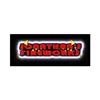How to Set Off Fireworks: A Guide for Novices
If you’re thinking of getting involved in the firework celebrations this New Year’s Eve and want to host a private party rather than locate a public firework display, you’re not alone. Private firework displays offer a world of benefits: having ample viewing space, toilet access, and food and drinks on tap without a massive queue to name a few.
Setting off fireworks is easy, even if you’re a complete beginner, but preparation beforehand is a big factor that contributes to your safety and enjoyment of the event.

Setting up Fireworks for a Display
Getting ready to launch fireworks doesn’t take very long, but the effort you put in before will really pay off. There are a few things you need to consider when setting up fireworks.
Safe Viewing Distance
Probably the most important step in firing fireworks, this will also help you to determine which category of fireworks you can buy and help you to choose the right garden fireworks.
Category 2 fireworks, also called garden fireworks, are the most common choice for private gardens. Fireworks in this category have a safe viewing distance of anywhere between 8–15m. Category 2 fireworks come in all different shapes and sizes, including Roman candles, rockets, fountains, and strobes.
Firework cakes or barrages are ideal for beginners because they are so easy to light. You only need to light the fuse once to see multiple shots. Some barrages have hundred of shots in them meaning you won’t miss one of them focusing on what you need to do next.
We love Celtic’s 6 pack of firework barrages because it combines a huge variety of shots in different colours and patterns. The pack consists of 6 barrages, each with multiple shots, so you only need to worry about lighting a fuse six times in the whole display. Altogether, these fireworks have a safe viewing distance of 8 metres, meaning they are suitable for almost any garden.
If your garden is on the larger side, you might be able to opt for Category 3 fireworks. These have a safe viewing distance of 25 metres minimum.
If you have enough space to go large, you should think about including a mine firework. These are the loudest fireworks available and deliver multiple shots together in one or two quick punches. We like Miner’s Revenge which launches 19 shots in one go, producing one of the largest bursts we offer, accompanied by a thunderous crack.
Weather Considerations
Checking the forecast on the day of your event is important. Light rainfall isn’t enough to put a damper on your fireworks, as long as you keep their fuses dry you shouldn’t have a problem. Consider covering up your fireworks with plastic bags before the big event. Make sure all the plastic bags are removed and kept well away before you start.
However, wind presents a problem. The direction of the wind can affect the safety of your spectators and yourself. If there are high winds or wind is forecast to sweep firework fallout and debris towards your spectator spot you’ll be putting people at risk. If you can, try to change the setup so your viewing spot is on the other side of the fireworks. Be careful though, don’t risk stationing fireworks too close to trees or buildings, or under powerlines.
Keep Pets Safe
Animals like dogs and cats are known to be fearful of fireworks, and if they’re allowed to run free outdoors they could present a risk to themselves and others. Take steps to manage dogs’ stress levels during firework displays, and help cats cope with loud fireworks.
Make sure your pets are all securely shut inside the house so there’s no potential for an accident or a lost animal. Inform all guests of the situation so they don’t accidentally let your pets out if they open the back door.
How to Light Fireworks
Lighting fireworks is easy, almost all fireworks and certainly all from reputable firework retailers will contain instructions in their packaging. Different types of fireworks are lit in different ways.
In almost all cases you will need to remove some packaging and pull the fuse up or away from the body of the firework. It will likely be taped down or wrapped in the paper of the firework packaging. Make sure all of your fuses are prepared beforehand so they are fully free from packaging debris and you know where they are when you approach a firework to light it. Some fireworks come with glow fuses that glow in the dark, making it easier to locate them at night.
Rockets and Roman Candles

Rockets will often come with a tube to support them for launching. You can also use an old piece of piping if it’s not included. Rockets should never be fired from bottles, these days they are too top heavy for this to be safe. Drive the tube into the ground so that you can feed the rocket into it.
Another method is to use a stick that will afford more space and make it easier for you to reload if you want to use the tube for more fireworks. Any sturdy stick like an old broom handle will do. Stake the stick firmly in the ground and attach the tube to it with strong tape like duct tape, then feed your rocket into it.
You’ll light the fuse at the right time and then have a few seconds to quickly retreat to a safe distance.
Catherine Wheels

A Catherine wheel should be fixed to a post away from any fire hazards. For this reason, you shouldn’t use a fence post of a structure like a shed or a tree. Source a sturdy post and drive it into the lawn of your garden. Make sure it is secure and won’t wobble. The Catherine wheel will spin at high speeds and the force could push a post over if it’s not properly secured in the ground.
Nail the Catherine wheel to the post. You’ll need to position it high enough to give a good view, and ensure it’s not too close to the ground, but also make sure you can easily light the fuse from standing on the ground. Never use a ladder to light a Catherine wheel and you’ll need to be able to quickly retreat in a matter of seconds.
Cakes and Barrages

Cakes and barrages are extremely simple to use. Carefully cut away the cardboard top, making sure the whole top of the firework is open and that each shot has ample room to be fired. The way a barrage or cake is designed will include a wooden board at the bottom onto which all the individual shots are attached.
Dig a small indentation in your firing space and sit the barrage in the hole. This only needs to be a couple of inches deep at the most. Drive a stake into the ground next to the hole and tape the cake or barrage to it. You may want to set it on a waterproof layer to prevent damp affecting it. If the ground is mushy or overly damp, use an additional wooden board as a buffer.
Identify the main fuse and make sure this is readily available for the firring moment. When the time comes, light the main fuse and step back to watch multiple shots.
Cake Slices

If cake fireworks are fat squares and rectangles then cakes slices are… you guessed it, a thin slice of the same! Cake’s are designed with multiple shots in only a few rows and as such, they can’t stand up on their own.
To prepare a cake slice, dig a shallow hole in the ground similar to how you set up a barrage and sit the firework in the hole. Drive in a stake and attach it to the firework in the same way. You may want to stake several sticks on either side to hold it in place.
Another option is to use a couple of bricks on either side, ensuring the top of the cake slice is higher than the tops of the bricks. You could also use stones for this but bricks, with their flat sides, are ideal.
Mines

A mine is set up much in the same way as a cake or barrage. In fact, mines are sometimes called ‘dump cakes’ because they are cake-shaped but only work in a different way (firing all shots or ‘dumping’ them at once). A mine can be set up in the same way as a cake or barrage. You will then have a few seconds between lighting the fuse and retreating before the firework goes off.
Fountains

Fountains come with a flat base and will have instructions to tell you whether they need to be staked or just placed on a hard, flat surface. When staking a fountain using a sturdy post that is driven into the grown and tape the fountain to it securely with duct tape.
Fountains can be angled if they are secured to posts in order to produce more creative effects. As fountains are designed to perform on ground level they are sometimes raised, either to give people a better view or to show off effects more creatively. To raise a fountain, use a strong wooden structure like a crate or box. Drive a stake into the ground next to the box and tape the fountain, sitting on the box, to the stake.
Do’s and Don’t’s of Firing Fireworks
Do
- Angle fireworks slightly away from spectators to ensure they are well clear or any fallout.
- Remove fuse covers and reattach before the big moment. Sometimes fuse covers are quite tricky to remove and this will help speed things along.
- Think about what you’d do in an emergency, and make sure you have adequate access to an exit and first aid supplies.
Don’t
- Buy fireworks unless they have a CE mark or EN 15947 on their packaging.
- Approach a firework that has been lit but hasn’t launched. Wait for a few minutes and then douse it with water before approaching it.
- Take your firework display past 11 pm, this is the legal cut off point to fireworks unless it’s Firework Night (12 pm), or New Year’s Eve/Diwali/Chinese New Year (1 am)
350 Barlow Moor Rd
Chorlton
Manchester, M21 8AZ
07810 222123
info@chorltonfireworks.com

















































